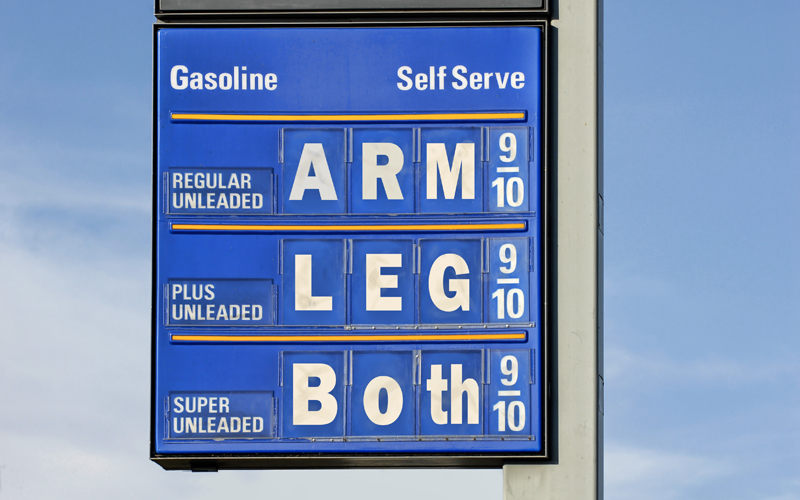Filling up at the pump has never been so expensive. What drives the price of petrol so high and is there anything we can do about it?
The price of crude oil is at multi-year highs and that has a flow-on effect directly to the bowser. In a nutshell, crude oil’s price has been affected by an overwhelming demand for natural resources created by the world’s economy post-pandemic. As crude oil is a finite resource, increased demand results in an increased price. The higher the cost per barrel of crude oil, the more expensive it is for a fuel refinery to buy the resource it needs to distil into the stuff you put into your car.
With the average capitol city price at the pump hovering around $1.70 per litre, what else is bumping up the price? And why do prices fluctuate so dramatically day-to-day and between suburbs and states, given the fuel costs roughly the same for each petrol station in a given area to acquire.
Well, here’s a wrap of what drives the price of petrol, so you’re aware of the factors which could help you buy better.
1. Main drivers of the price of petrol
The price of petrol in Australia is linked to the international price of refined petrol, set by the Singapore Mogas 95 Unleaded benchmark (which is priced in US dollars).
So if the Mogas benchmark price rises, the cost of petrol at the pump will typically follow and vice versa. Although the length of the fuel supply chain means the change could take a week or so.
The value of that Mogas benchmark is driven by many things, including the price of crude oil (see above), global supply and demand for petrol. Because it’s denominated in US dollars, it also fluctuates based on our currency exchange rate.
While the price of fuel seems outlandish right now, AIP data actually shows that in the June 2021 quarter, Australian petrol prices were the fifth cheapest in the OECD group of advanced economies, only pipped by Turkey, the US, Canada and Chile.
And in case you’re wondering, it’s a similar story for diesel fuel, which is tied to the Gasoil 10ppm benchmark.
2. Taxes make the jump
But price drivers are only part of the story.
According to the ACCC, the value of the benchmark price of petrol only makes up around 50 per cent of the overall price at the pump.
The next biggest culprit is, you guessed it, taxes.
The fixed Australian Government fuel excise is one tax the government slaps on petrol. For unleaded petrol and diesel the price includes the fuel excise of 44.2 cents per litre (as at February 2022). In 2021, gross revenue from the fuel excise tax was $19.2 billion and net revenue was $11.6 billion.
The Government also charges GST at 10 per cent of the price.
In total, taxes account for around 38 per cent of the bill every time you fill up the tank. This is actually quite low by international standards.
Finally, the remaining 12 per cent of the price of petrol is split between the companies that get the petrol to your tank (retailers, distributors and wholesalers). Of this, the AIP estimates the wholesale sector makes an average annual net profit across all fuels of just 1.7 cents per litre.
3. The petrol price cycle
So that’s the back end, what about the day-to-day pump prices?
This is known as the petrol price cycle. It’s the result of petrol retailers competing for business through aggressive and ongoing discounting.
Once the discounting becomes too unprofitable and unsustainable, the price of petrol spikes up again quickly, ending the cycle.
This varies state to state and there are recognised petrol price cycles across Sydney, Melbourne, Brisbane, Adelaide and Perth.
Information on the best time to buy is available from a number of sources, including the ACCC. You can use an app to check the best price in the area you’re currently in:
6 of the best apps to track cheap petrol prices
And on that old perception that retailers push up prices on public holidays? The ACCC investigations found there’s little evidence to suggest this is the case.
It could just be the cost of a tank is front of mind as holidaymakers fill up for trips away.
So, I’m afraid all you can do is look online and buy at the best time.




























Trending
Sorry. No data so far.